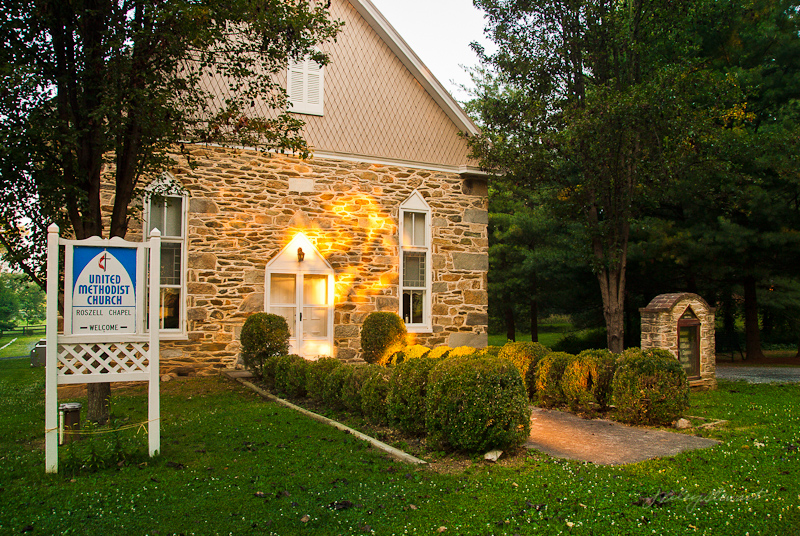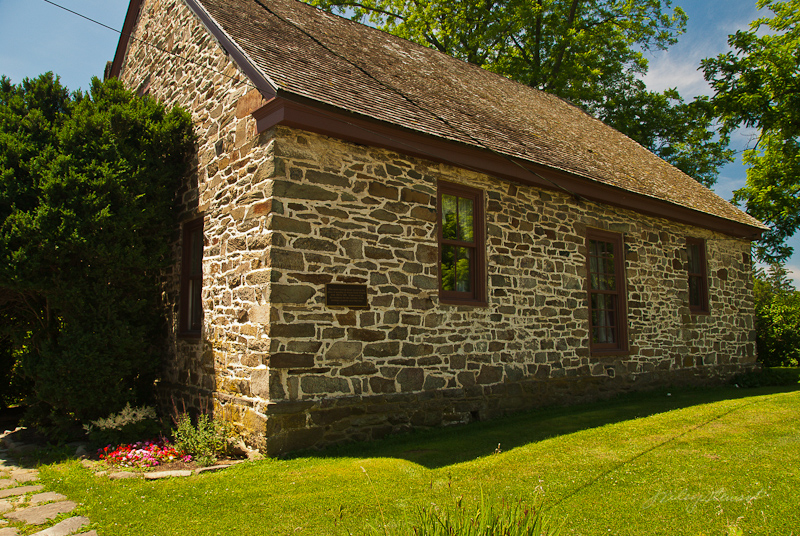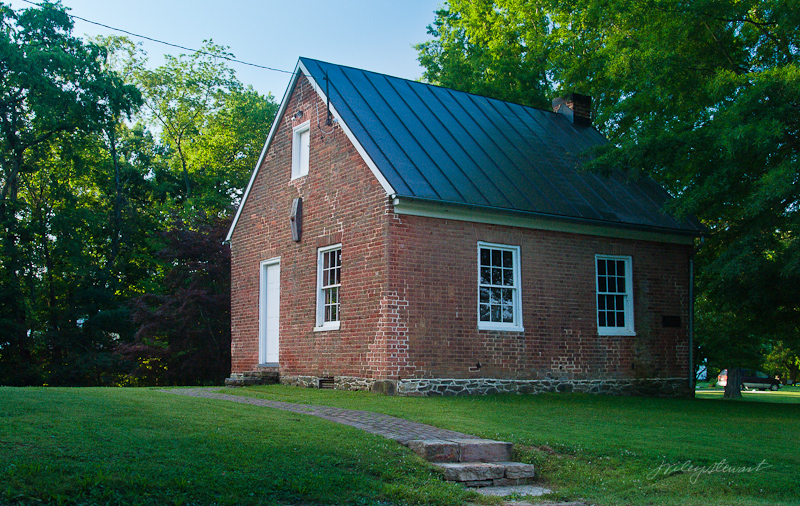Today’s trip takes us to the village of Philomont, the southern-most of the three “Mont Villages” along Snickersville Turnpike, then to Lincoln, where Quakers established the Goose Creek Meeting in 1736 that continues as an active community today.
Philomont
Philomont is a quiet, shady little village at the crossroads of Snickersville Turnpike and Jeb Stuart Road in Loudoun County, Virginia. To the north of Jeb Stuart Road was 434 acres granted to Quaker Joseph Dixon; to the south was the 538-acre 1739 grant to Englishman Lovell Jackson. Absentee Englishmen held the Jackson grant until 1836, when ownership transferred to ‘locals,’ who were predominantly Methodists. One prominent family on the south side of the road was the Roszels, who made it possible to build the first church in the area, the Mountain Chapel. As early as 1769, an Anglican chapel sat near the Hibbs Bridge on Mountain Road (Snickersville Turnpike). The Southern Methodists assumed control of the chapel in 1890, and because the Milhollen family deeded a half-acre in Philomont to them, they moved their little church, stone by stone, to the new site. It still stands today as a United Methodist Church and carries the name Roszel’s Chapel in honor of the original family who made it possible.

After the Snickersville Turnpike Company straightened The Great Road (or Colchester Road) in 1818, and where it then crossed with other main roads, the village of Philomont sprang up, grew, and got its first post office in 1831. Three years later the town had six dwellings, one school, seven mercantiles, two saddlers, and probably a blacksmith and a wheelwright shop.
The only remaining store today is the one built in 1913 from concrete blocks made on site. It has an interesting history, having been built for “Pop Milhollen” who had owned the red brick store across the street until it burned down in 1908. The new store was named Pearson’s General Store and it remained a Milhollen family business until 1964.
 Over the years, the Philomont Post Office moved from store to store, but eventually found its permanent home in the old Pearson’s Store, renamed Philo-Mont Gen Store in 1966. It remains the only Loudoun County Post Office to operate from a store, just where it has since 1941.
Over the years, the Philomont Post Office moved from store to store, but eventually found its permanent home in the old Pearson’s Store, renamed Philo-Mont Gen Store in 1966. It remains the only Loudoun County Post Office to operate from a store, just where it has since 1941.
Lincoln
North of Jeb Stuart Road in Philomont lies Loudoun’s historic Quaker land, all the way to the Potomac River between the Catoctin Mountains and the Blue Ridge.
The period 1730 – 1850 was a period of rapid growth and territorial migration of the Society of Friends, or Quakers, into northern parts of Colonial Virginia. Already settled in Maryland by 1725 (Monacacy Meeting at Buckeystown, MD) and in the Shenandoah Valley by 1730 (Hopewell Meeting near Winchester, VA), Quakers further migrated to areas along the south bank of the Potomac River and its tributaries. By 1735 there were so many more Quakers in Virginia compared to Maryland that the Hopewell Meeting became the business meeting for all Quakers in this area, including the community led by Amos Janney in 1733 to Waterford, VA, named Fairfax Meeting.
Jacob Janney, a relative of Amos, settled on the banks of Goose Creek about eight miles south of Fairfax Meeting as early as 1736. Friends locating there first worshipped in private houses, but moved into a log meetinghouse by 1738. In 1745 Janney sought to establish a new meeting called Goose Creek Meeting, and it was permitted in 1749. Goose Creek Friends bought a 10-acre tract to erect a meetinghouse and schoolhouse, and to establish a burial ground.

The new 1765 stone meetinghouse became the center of the Goose Creek Meeting, but by 1815 the Meeting had outgrown it. A new brick meetinghouse, a schoolhouse, a stable, and other smaller structures were built between 1815 and 1817. These historic structures and the homes built since make up a beautifully quaint cloister of Virginia history we see as Lincoln today.
Lincoln’s history is remarkable in its strong supportive relationship between its black and white residents, consistent with Quaker dogma. They worked side by side in building and caring for Quaker resources, and both black and white children were taught in the Quaker schools.

Lincoln likely was a significant hub along the Underground Railroad. Quaker and mapmaker Yardley Taylor of Evergreen was the one Loudouner formally accused of aiding slaves while the Underground Railroad was operating, and Quakers in Lincoln and stories of slaves moving northward to crossings on the Potomack River were often linked.
After the Civil War, the village was named Lincoln (after Abraham Lincoln). By then it had its own post office, two stores, an iron foundry, a tanyard, an undertaking business, a milling shop, a tin shop, and a livery stable, among other businesses.
For more images of the area visit our photo gallery by clicking or paste http://www.pbase.com/mosbyheritage/philomont2lincoln in your browser.
Also visit “Small Town Virginia” – a photographic project to capture the quaintness of our Virginian hamlets during the quiet hours.
Copyright 2012, J Riley Stewart
